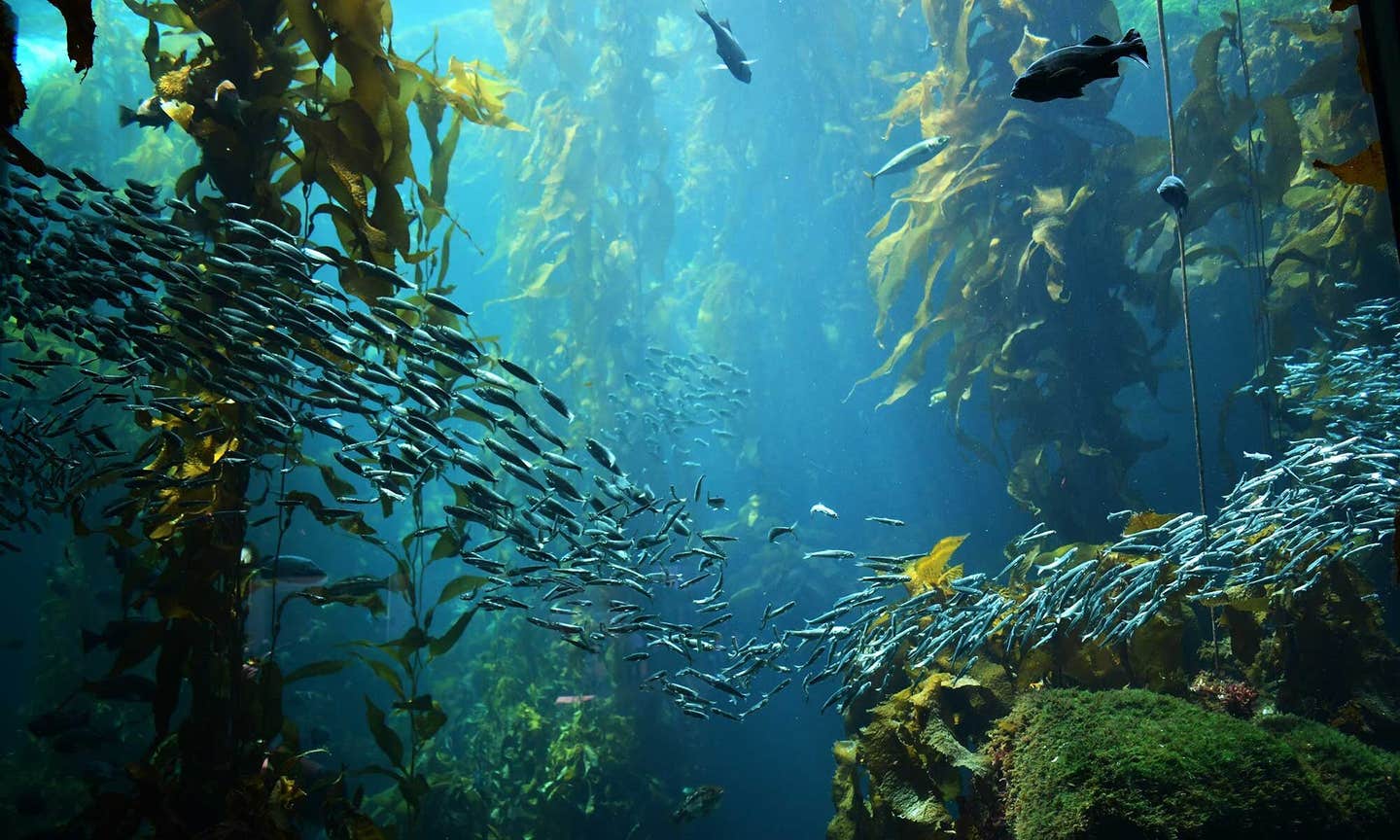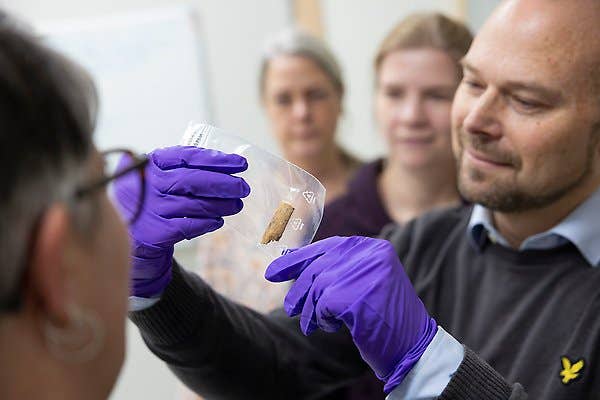540 million years of ocean life measured in landmark global study
A first-of-its-kind Stanford study shows ocean biomass rose over 540 million years, linking biodiversity to ecosystem health and stability.

Stanford study finds ocean life biomass rose steadily over 540 million years, linking biodiversity to ecosystem health. (CREDIT: CC BY-SA 4.0)
The oceans have always been alive with mystery, beauty, and change. For the first time, scientists have measured how much life has filled the seas over the last 540 million years. Published in the journal, Current Biology, this work came from Stanford University and was led by Pulkit Singh, a postdoctoral scholar at the Stanford Doerr School of Sustainability.
Digging Into Deep Time
Singh and his team looked at over 7,700 marine limestone samples from around the world. These samples held fossils that told stories about past life. The team used a detailed method called petrographic point-counting. They sliced rocks so thin that light could shine through and then checked them under a microscope. This showed them how much of the rock was made of shells and skeletons from animals, algae, and tiny single-celled creatures called protists.
During the Cambrian period, starting about 540 million years ago, only about 10% of rocks were shells. But things changed fast. Around 485 million years ago, during the Ordovician, the shell content grew. This matched the Cambrian Explosion, a time when life became more complex and diverse. Sponges first dominated, but starfish ancestors and marine arthropods like trilobites later took over.
Over the next 230 million years, shell content stayed strong, rising above 20% in many places. However, about 375 to 360 million years ago, life hit a roadblock. A major extinction event called the Late Devonian mass extinction caused biomass to drop. Then, 250 million years ago, the “Great Dying” struck. This Permian-Triassic extinction killed most life, and shell content fell to just 3%.
Rebuilding After Extinction
Even after such destruction, life rebounded. Shell content rose again, except during two more mass extinctions: one 200 million years ago at the end of the Triassic and the other 66 million years ago, when a giant asteroid wiped out the non-avian dinosaurs. Today, in the Cenozoic era, shells make up over 40% of marine rock volume. Mollusks and corals are now big contributors.
Singh said, “The overall pattern that we were able to capture is that it’s a gradual increase.”
Jonathan Payne, a senior study author at Stanford, added, “The first quantitative effort to document and graph biodiversity across geological time was made in 1860, but until Pulkit’s paper, there’s never been a corresponding biomass-across-time paper.”
Related Stories
Singh took years to gather data from old studies and his own samples. “Understanding the amount of biomass is important because it represents key traits about an ecosystem that are not captured by the number of species or even the number of niches that they fill,” he explained.
Biomass and Biodiversity: A Linked Story
Why does biomass matter? Biomass shows how much life fills an ecosystem. It tells you how productive the ecosystem is, how much food exists, and how many organisms it can support. Productivity shows how healthy the ecosystem is, and all these clues reveal the health of our planet.
The team tested their data to make sure their findings were strong. They sorted samples by water depth, latitude, and even ancient continent shapes. No matter how they tested, the pattern stayed the same: biomass has risen over time alongside biodiversity.
Singh said, “The more tests we did and the more we divided our dataset, we realized that these big biological patterns we were seeing stayed over time.”
When life became more diverse, it also became more efficient. Phytoplankton captured sunlight energy, and decomposers recycled nutrients back into the system. This kept food chains strong. Singh explained, “There is more food available in ecosystems and because of that, the ecosystems can support more life, there’s more energy available, and that leads to greater abundance expressed in biomass.”
Human Impact on This Long History
For hundreds of millions of years, life in the oceans has grown. But today, that story could be changing. Human activities like fertilizer runoff, overfishing, and ocean acidification have hurt biodiversity. Some scientists believe we are in a sixth mass extinction right now.
Payne warned, “Modern times are quite complicated given the extent of human activity that’s rapidly altering conditions planetwide, including in the oceans.”
He added, “Our findings show that overall biomass is linked to biodiversity and that losses in biodiversity may suppress productivity for geologically meaningful intervals, adding one more argument of why conserving biodiversity is essential for the health of humans and our planet.”
The study’s results also showed that extinction events caused big drops in biomass. The Late Devonian, end-Permian, and end-Triassic extinctions each led to sharp declines. For example, after the Permian extinction, shell content dropped below even Cambrian levels.
A New Way of Seeing Earth’s Past
The researchers used other methods to check their work. They read nearly 16,000 published abstracts to see how often scientists used words like “skeletal” or “fossiliferous” versus “non-skeletal” to describe carbonates. The text data showed similar trends to the fossil samples, giving more confidence to the study’s findings.
Another interesting pattern was that shell-drilling and shell-crushing predators have increased over time. Normally, if predators destroyed more shells, the preserved shell content would decrease. But in this study, shell content still rose. This suggests life was producing shells faster than predators could destroy them.
The team also found that mollusks and corals grew more common after the Triassic period. Even though aragonite, the mineral that makes up many mollusk shells, dissolves faster than calcite, the shells still piled up over time. This shows the power of life’s productivity to outpace chemical destruction.
Lessons for Today and the Future
The big takeaway is clear: ecosystems with more biodiversity also have more biomass. This relationship goes back hundreds of millions of years. It tells you that the health of marine life depends not just on having many species, but also on having enough living material to keep food webs strong.
Singh’s study filled a major gap in understanding Earth’s history. Before, scientists knew about biodiversity changes but had no direct measure of biomass changes through time. This new data helps us see how life’s energy and complexity have shaped our oceans.
Today, protecting marine biodiversity is not just about saving pretty fish or coral reefs. It’s about keeping the productivity and stability of oceans alive for future generations.
Payne said it best: “Ecosystem function and its evolution depend on the number of taxa and the amount of biomass.”
This research shows how every shell, every tiny fossil, and every species adds up to keep life thriving on Earth.
Note: The article above provided above by The Brighter Side of News.
Like these kind of feel good stories? Get The Brighter Side of News' newsletter.



